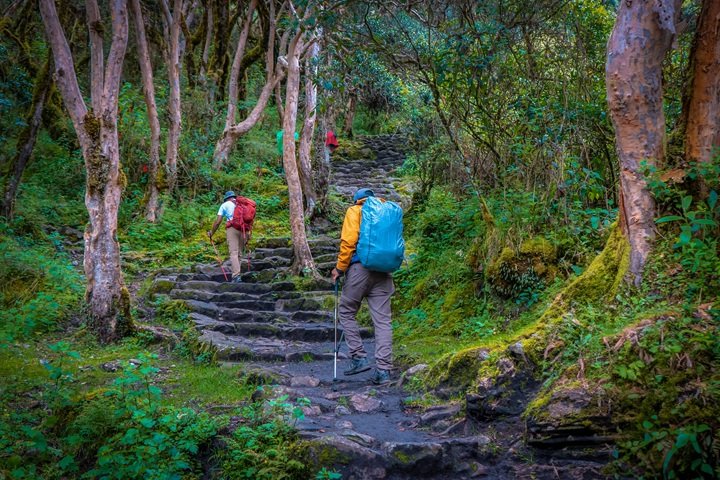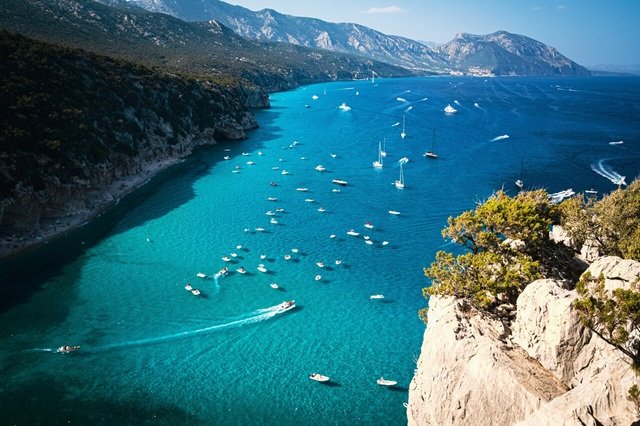
You don’t just hike the Inca Trail. You follow in the footsteps of a civilization that carved stone paths through mountains, built cities in the clouds, and saw the world as something sacred.
Somewhere in the Peruvian Andes in South America, beyond the reach of roads and phone signals, this trail still exists. It winds through cloud forests, past ancient ruins, across high passes touched by snow, until it finally reaches the Sun Gate. And there, at sunrise, Machu Picchu appears like a secret kept for centuries.
It’s called the Inca Trail. But what it offers is more than just a hike.
A Path That Tells a Story
The classic Inca Trail to Machu Picchu is a four-day trek that covers 42 kilometers (26 miles) from a remote checkpoint known as Kilometer 82 to the ancient citadel. The route was once part of the Qhapaq Ñan, the Inca Empire’s vast road system that connected distant corners of South America.
Today, it’s one of the world’s most iconic treks. Not because it’s the hardest or the longest, but because every step is layered with meaning. Along the way, you pass sites like Wiñay Wayna and Runkurakay, carved stone resting quietly in the forest. Places no car or train can reach.
Each campsite, each sunrise, each stair feels like a portal between time and nature.

Is It for You?
Maybe you’ve never done a multi-day trek before. That’s fine. The Inca Trail isn’t about athletic performance, it’s about presence. Yes, you’ll climb high (up to 4,215 meters / 13,800 feet), and yes, it will challenge you. But thousands of people from all walks of life do it every year. What matters is preparation, time to acclimatize, and a willingness to disconnect.
If you’ve ever wondered what it feels like to earn a destination, not just visit it, this is that kind of journey.
When to Go?
The best months are April to October, when the skies are clearer. June to August is the busiest time, so book early if you want a spot. The trail closes every February for maintenance, and in the rainy months (November to March), conditions get tougher.
But there’s beauty in every season. Mist rising from the jungle. Stars stretching over camp. The silence between footsteps.

How to Book the Experience
You can’t just show up and hike. Permits are limited and issued by name, so you’ll need to go through a licensed travel agency in Peru. They handle logistics, porters, guides, meals, and make sure the route is respected and preserved.
It’s more than a transaction. It’s a commitment, to the land, to the people who carry your gear, to the story you’re about to live.
What’s Included in a 4-Day Trek
When you book a 4-day trek on the Inca Trail to Machu Picchu, most things are taken care of, so you can focus on the journey.
You’re picked up from Cusco. You hike with a local guide who knows the trail like home. A team of porters carries the heavier gear. Campsites are ready when you arrive. Meals are cooked fresh each day, often in places without roads or kitchens. And at the end, there’s a train that brings you back, tired but full.
Some tours offer extras like better tents or walking sticks. But honestly, what you really need is already there: the path, the people, and four days of being present.

What to Bring
Good hiking boots. A waterproof jacket. Layers for cold nights and sunny afternoons. Sunscreen. Bug spray. A headlamp. A water bottle. Maybe a journal.
And leave space, for silence, for awe, for whatever this trail will give you.

Why It Stays With You
You could take a train. You could arrive rested and clean. But you’d miss something hard to explain: the feeling of arriving on foot, tired but wide-eyed, through the gate the Incas once used.
That first glimpse of Machu Picchu after four days on the trail? It hits different. It stays with you.
Because some places aren’t just meant to be seen, they’re meant to be earned.
And if you ever decide to take that step, choose a travel agency in Peru that treats the trail with the respect it deserves. The right team doesn’t just guide you, they help you understand why this path still matters.



